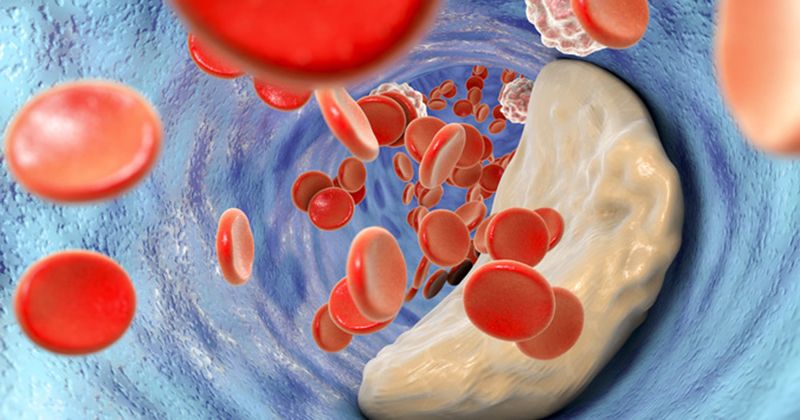Exposure to toxic metals linked to buildup of calcified coronary plaque
Key takeaways:
- Toxic metal exposure was linked to significant coronary calcium progression over time.
- Toxic elements included cadmium, zinc, copper, tungsten, uranium and cobalt.
Exposure to toxic metals such as cadmium and tungsten was associated with increased coronary calcium progression, a significant predictor of atherosclerosis, according to data published in the Journal of the American College of Cardiology.
“Pollution is the greatest environmental risk to cardiovascular health,” Katlyn E. McGraw, PhD, postdoctoral research scientist in environmental health sciences at Columbia University Mailman School of Public Health, said in a press release. “Given the widespread occurrence of these metals due to industrial and agricultural activities, this study calls for heightened awareness and regulatory measures to limit exposure and protect cardiovascular health.”

In a prior study published in Arteriosclerosis, Thrombosis, and Vascular Biology, Maria Tellez-Plaza, MD, PhD, a senior scientist in the department of chronic diseases epidemiology at the National Centre of Epidemiology in Madrid, used data from the longitudinal Aragon Workers’ Health Study of 5,678 workers at an Opel car assembly plant in Spain to assess the association between nonessential metals exposure with subclinical atherosclerosis.
As Healio previously reported, exposure to toxic metals, such as arsenic, cadmium and titanium, was associated with subclinical atherosclerosis in three vascular territories.
For the present analysis, Maria Tellez-Plaza, McGraw and colleagues used data from 6,418 MESA participants to evaluate the impact of elevated urinary levels of essential and nonessential metals on coronary artery calcification progression.
Nonessential metals include cadmium, tungsten and uranium, whereas essential metals include cobalt, copper and zinc, according to the study.
Toxic metals and coronary plaque progression
CAC was measured at baseline (median, 6.3) and one to four repeated times over a 10-year period, whereas urinary metal was measured once at baseline.
The average CAC score was approximately 51% higher (95% CI, 32-74) among individuals in the highest tertile of cadmium at baseline compared with the lowest, and was 75% (95% CI, 47-107) higher over the 10-year study period.
Ten-year average CAC scores also remained higher among individuals with the highest levels of urinary zinc (85%; 95% CI, 56-119), copper (55%; 95% CI, 30-80), tungsten (45%; 95% CI, 23-71), uranium (39%; 95% CI, 17-64) and cobalt (47%; 95% CI, 25-74) compared with the lowest.
The 10-year change in CAC score associated with all metals remained consistent after adjustment for clinical factors, with the exception of copper and zinc, which decreased to 33% and 57% elevations, respectively.
Moreover, the associations between urinary metal levels and CAC score were comparable in magnitude to those for other traditional CVD risk factors.
In 2023, the American Heart Association issued a scientific statement on the impact of toxic metals on heart health.
The AHA stated that toxic metals such as lead, cadmium and arsenic, found in some food and water, represent a significant hazard to CV health, especially among historically underrepresented communities.
“Our findings highlight the importance of considering metal exposure as a significant risk factor for atherosclerosis and cardiovascular disease,” McGraw said in the release. “This could lead to new prevention and treatment strategies that target metal exposure.”
Consider ‘environmental factors alongside traditional risk factors’

In a related editorial, Sadeer Al-Kindi, MD, associate director for the division of cardiovascular prevention and wellness at Houston Methodist DeBakey Heart and Vascular Center, and colleagues discussed how assessment for toxic metal exposure should be assessed in future studies to inform clinical practice.
“Public health measures that have reduced metal exposure (eg, lead and cadmium) have been associated with reductions in cardiovascular disease mortality, highlighting the potential for significant public health impact through further efforts to reduce metal exposure,” Al-Kindi and colleagues wrote. “The findings also suggest that clinicians should consider environmental metal exposure as an important risk factor for ASCVD.
“Future studies should investigate the role of incorporating metal exposure assessment in cardiovascular risk prediction, especially for patients in areas with known contamination or occupational exposures,” they wrote. “Overall, the study highlights the need for a more holistic approach to cardiovascular risk management that considers environmental factors alongside traditional risk factors.”
References:
- Al-Kindi S, et al. J Am Coll Cardiol. 2024;doi:10.1016/j.jacc.2024.07.029.
- Addison D, et al. Circulation. 2023;doi:10.1161/CIR.0000000000001158.
- Grau-Perez M, et al. Arterioscler Thromb Vasc Biol. 2021;doi:10.1161/ATVBAHA.121.316358.
- Metal exposure can increase cardiovascular disease risk. https://www.eurekalert.org/news-releases/1058154. Published Sept. 18, 2024. Accessed Sept. 18, 2024.
